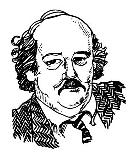Syndicated to Kansas newspapers July 4, 2016
 Lawmakers, mostly Republicans, have danced around the two biggest issues that might have seen many of them buying their own lunch and drinks—in their hometowns—next legislative session.
Lawmakers, mostly Republicans, have danced around the two biggest issues that might have seen many of them buying their own lunch and drinks—in their hometowns—next legislative session.
The conservative Republicans reluctantly joined moderate Republicans and Democrats to pass a school funding bill that the Kansas Supreme Court says meets half of the constitutional infirmities alleged in the state’s $4 billion a year support of public education.
And the high court said, essentially, we won’t close down schools this time…but the school finance issue is just half done.
Oh, and by borrowing some $900 million from the state’s idle funds in what they call a certificate of indebtedness, there were no layoffs or furloughs of state workers and most of the bills got paid on time as the fiscal year ended Thursday.
Now, that’s just borrowing from other funds and putting the money into the State General Fund from which most of the state’s bills are paid, but it prevented anything really ugly from happening just a month before the August primary elections.
Does it get any better than that? Well, sure it does, but that’s what campaigns are about, finding the way to convince people to vote for you by telling them the best side of what’s happening, not taking them into the major issues that aren’t going to become apparent until after the election cycle.
The state is surviving on a payday loan and is awaiting what could be hundreds of millions of dollars of additional spending necessary for K-12 education next year, but for the vast majority of Kansans and the vast majority of Kansas voters, nothing really bad has happened.
Next session, after elections send a bunch of newbies and some fairly well broken-in legislators back to Topeka, things get pretty ugly. For purposes of the campaign season that will include a lot of primary election battles among Republicans, nothing really bad has happened that affects most of those voters.
So, how do Democrats and moderate Republicans campaign against the tax-cutters who cut state taxes too much four years ago, or after it became apparent that revenues were dropping, didn’t put the brakes on spending or restore some taxes? And, when in 2015 lawmakers finally raised taxes, they left the businesses untouched while raising sales taxes and cigarette taxes and eliminated a bunch more of those Kansas income tax deductions that most of us have to pay a tax adviser to ferret out for us.
So, how does all this play out in the primary election cycle?
In the House, it’s 17 primaries, 15 among Republicans, two among Democrats and the winner is your new Representative. And those 17 House primaries, coupled with the 35 uncontested races there, put nametags on 52 of the chamber’s 125 seats on Aug. 2.
In the Senate, there are three uncontested races, and nothing gets settled in the primary election except for those three Democrat-held seats. There are 15 Senate districts with primaries—13 Republican and 2 Democrat—whose winners go on to the general election in November.
Primaries are going to be an important first step, but just a first step. Meanwhile, schools will remain open and the state has borrowed enough money internally to keep the government in operation this summer but everything changes this winter when both issues will flare again.
Those folks on the doorstep? Better ask them whose taxes they intend to raise. Either that, or see whether the candidate can tell you what state government does that it might have to stop doing…and why…
Looks like an interesting month ahead, doesn’t it?
Because everything that appears like it’s OK at the moment is about to change when the weather gets cold in January in Topeka…
